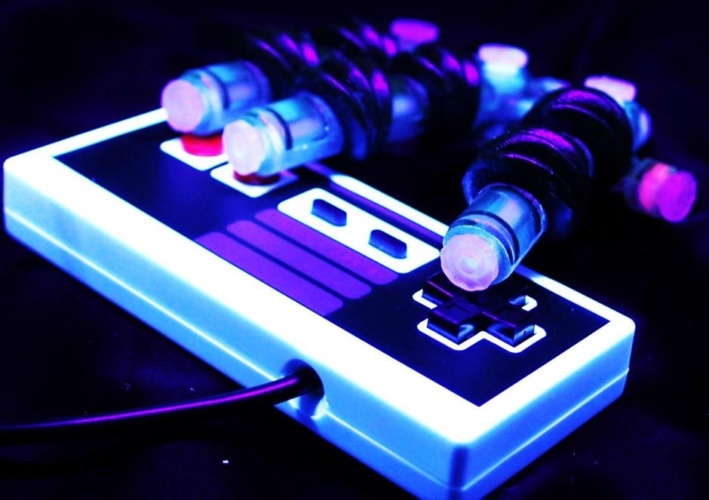The feat from researchers at the University of Maryland demonstrates an innovation in the field of soft robotics, which centres on creating flexible, inflatable robots that are powered by water or air. The inherent safety and adaptability of soft robots has generated interest in their use for applications in prosthetics and biomedical devices but controlling the fluids that make these soft robots bend and move has been problematic.
According to the university, the key breakthrough, led by University of Maryland assistant professor of mechanical engineering Ryan D. Sochol, was the ability to 3D print fully assembled soft robots with integrated fluidic circuits in a single step. The team’s findings have been published in Science Advances.
"Previously, each finger of a soft robotic hand would typically need its own control line, which can limit portability and usefulness," said co-first author Joshua Hubbard. "But by 3D printing the soft robotic hand with our integrated fluidic transistors, it can play Nintendo based on just one pressure input."
Mushroom-design fastener could aid soft robotics
Soft robotic gripper is inspired by twining plants
As a demonstration, the team designed an integrated fluidic circuit that allowed the hand to operate in response to the strength of a single control pressure. Applying a low pressure caused only the first finger to press the Nintendo controller to make Mario walk, while a high pressure led to Mario jumping. Guided by a set program that autonomously switched between off, low, medium, and high pressures, the robotic hand was able to press the buttons on the controller to successfully complete the first level of Super Mario Bros. in under 90 seconds.
"Recently, several groups have tried to harness fluidic circuits to enhance the autonomy of soft robots," said Ph.D. graduate and co-first author of the study Ruben Acevedo, "but the methods for building and integrating those fluidic circuits with the robots can take days to weeks, with a high degree of manual labour and technical skill."
To overcome these barriers, the team turned to PolyJet 3D Printing.
"Within the span of one day and with minor labour, researchers can now go from pressing start on a 3D printer to having complete soft robots - including all of the soft actuators, fluidic circuit elements, and body features - ready to use," said study co-author Kristen Edwards.

The choice to validate their strategy by beating the first level of Super Mario Bros. in real time was motivated by science. The video game's timing and level make-up are established, and a single mistake can immediately end the game, so playing Mario provided a new means for evaluating soft robot performance that is uniquely challenging.
In addition to the Nintendo-playing robotic hand, Sochol's team also reported terrapin turtle-inspired soft robots in their paper, which is open access and contains a link in the supplementary materials to a GitHub with all of the electronic design files from their work.
"We are freely sharing all of our design files so that anyone can readily download, modify on demand, and 3D print - whether with their own printer or through a printing service like us - all of the soft robots and fluidic circuit elements from our work," said Sochol. "It is our hope that this open-source 3D printing strategy will broaden accessibility, dissemination, reproducibility, and adoption of soft robots with integrated fluidic circuits and, in turn, accelerate advancement in the field."
At present, the team is exploring the use of their technique for biomedical applications including rehabilitation devices, surgical tools, and customisable prosthetics.




Nanogenerator consumes CO2 to generate electricity
Nice to see my my views being backed up by no less a figure than Sabine Hossenfelder https://youtu.be/QoJzs4fA4fo